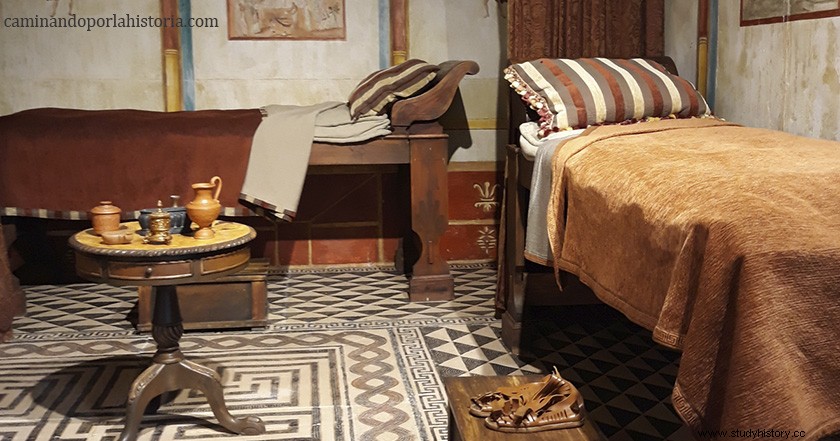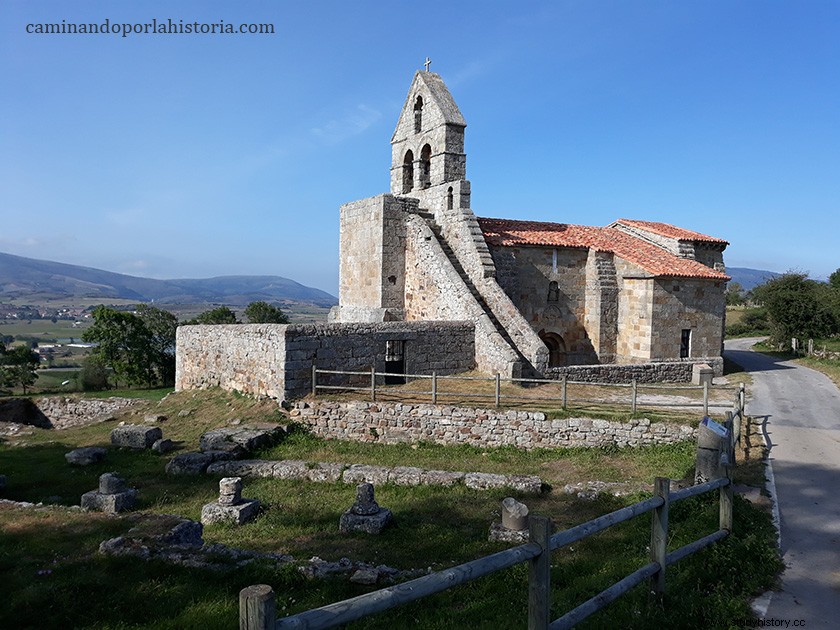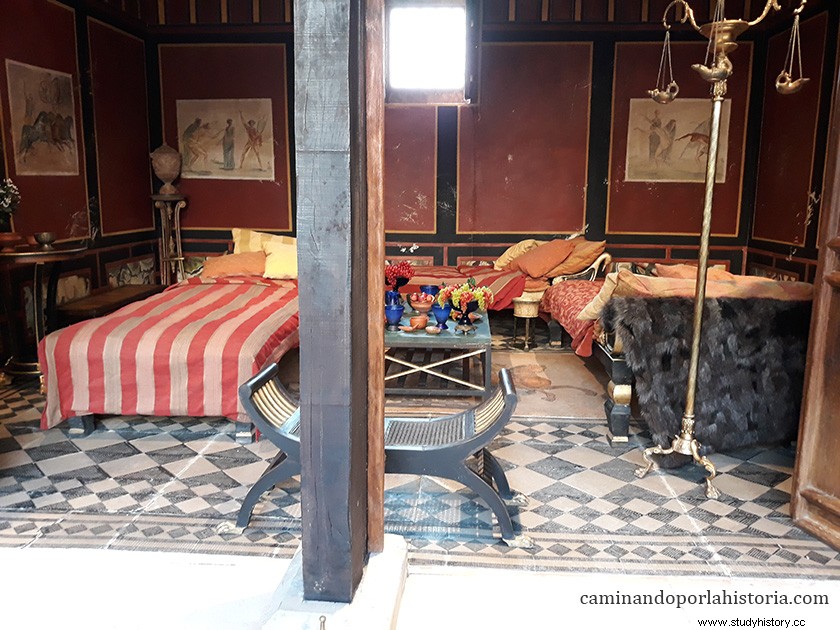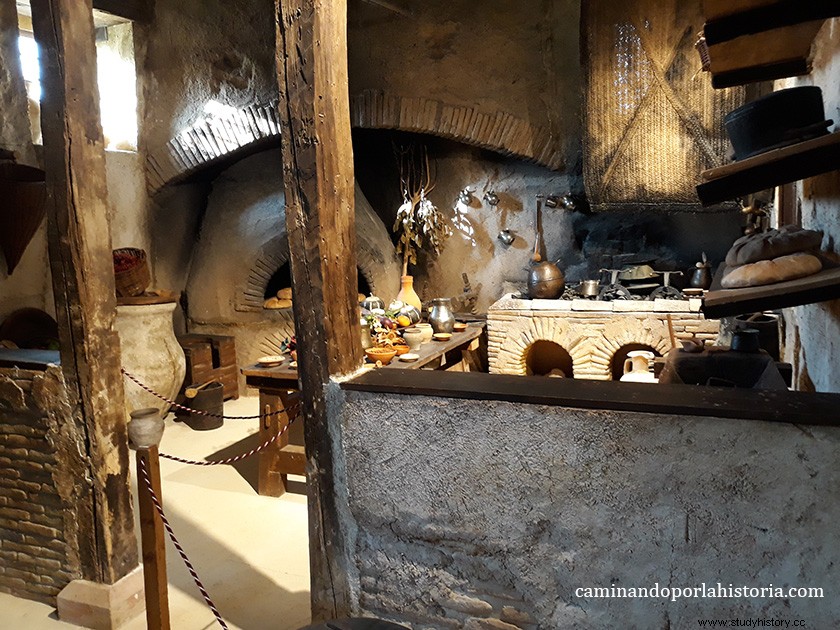
We moved to the south of Cantabria. There, on a hill that dominates the upper course of the Ebro river, we find the archaeological remains of the ancient Roman city of Juliobriga. Today they have become one of the must-see places for history lovers of Roman Hispania, since apart from knowing their archaeological remains, we can delight ourselves with a magnificent natural environment and the excellent recreation of a “ house ” Roman.
The origins of Juliobriga.
Year 27 a. C. Cayo Octavio Taurino he had just been proclaimed emperor of all the Romans. Faced with the need to vindicate himself militarily, he chose the last independent redoubt of the power of Rome that remained in the Iberian Peninsula. The Cantabrians, who at that time had been resisting the last attempt by the Roman troops to conquer their territory for two years. Their hill forts, or in the control zones of the deep valleys of northern Hispania, were proving difficult to conquer by the Romans. Hence, there could not be a better place to vindicate the new Emperor Augustus.
A few months after his proclamation, Augustus disembarks in the Roman city of Tarraco, from where he goes up the Ebro valley commanding seven Roman legions. Between the years 26-19 a. C., they strike down the Cantabrian resistance, the castros are destroyed, their warriors taken prisoner, and their way of life erased.
Immediately Rome began the reconstruction of the region following its cultural, social and economic canons. In the north, he decided to build two important seaports to communicate by sea, Hispania, Gaul and Britannia. This is how they are born Portus victoriae Iulio brigensium (Santander) and Portus Blendium (Suances). In the south, touching the plateau, the typical Roman city is built to house a legion that controls the area militarily, its name Pisorica in the surroundings of the current city of Herrera de Pisuerga (Palencia). Finally, the construction of Iuliobriga is decided. , in honor of the adoptive father of Augustus, Julius Caesar, his role in administrative control of the resources of the new region conquered by Rome.
Its geographical location was unbeatable, right on the road between the plateau and the aforementioned ports, it exercised control over the goods that traveled between the plateau and the Bay of Biscay. But in addition, the new city had control of the upper course of the Ebro river, according to Pliny the Elder himself:
“The Ebro river, with its rich river trade, rises in the Cantabrian territory, not far from the Roman city of Juliobriga”.
In search of Juliobriga.
As noted, Pliny the Elder echoed the Roman city of Juliobriga. Although he was not the only classical author who did so, since, among other Ptolemy, he left archaeological clues to the location of this Roman city, which was abandoned for unknown reasons in the 3rd century AD. C. A few centuries before the small medieval town of Retortillo was built on it.
The arrival of interest in archeology and the ancient world in the 19th century led to the search for Juliobriga. Ángel de los Ríos, a Cantabrian journalist who is a member of the Royal Academy of History, was the first to locate the remains of the small Roman city. He was then brought to the attention of the Museum of Prehistory and Archeology of Santander, which was in charge of a large part of the interventions carried out until the civil war. Archaeologists of international stature such as Adolf Shulten passed through Juliobriga.
After the war there were some small archaeological campaigns. But it would be after a new break, when in the 80s a large part of the archaeological remains that we can see today were located. Even so, we will have to wait for the 20th century for Juliobriga to take the definitive leap to awaken the knowledge of the general public. This occurred in 2003, with the opening of a Roman domus that recreates in great detail this typical house of the Roman culture.
What can we see in Juliobriga?
To start the visit, it is best to leave the car on the esplanade in Retortillo, which is located next to the Domus Romana de Juliobriga . Later we will approach on foot, to know the area called la Llanuca , which we will reach through the old decumanus maximum from the city of Juliobriga. Today remains of the arcade that covered the sides of it can still be seen. Once there we can see the remains of three large domus , which must have belonged to prominent figures of the Roman city. One of them is not excavated, the other two are. Both have been dated to the beginning of the 1st century, that is, a few years after the foundation of the city. The furthest one had several rooms called tabernae , which are due to the main road axis of Juliobriga. The other, which seems somewhat later, must have been the most important in the city, with nearly 1,200 m2 and a double floor.

Remains of the Decumanus arcade

Remains of the largest domus in Juliobriga
After this visit we will retrace our steps to reach the old Juliobriga forum . There are not many localized remains of it, since a Romanesque church was built on it in the 12th century. By the way, very close to the main place of worship in Roman times, which was a temple attached to the forum, most likely dedicated to Jupiter. We can also get closer after crossing the road to the most austere neighborhood from the city of Juliobriga, with various rectangular houses crowded together.

Romanesque church of Retortillo

The Juliobriga forum from the bell tower of the Church

House of the Andirons
To finally finish the visit to the archaeological remains located next to in front of the last place, where we will find the remains of two other Roman domus . Somewhat smaller than the first and possibly later ones, they were equipped with a heating system, with a double floor supported by brick pillars through which hot air circulated. The first one calledThe house of mosaics , had several of these black and white geometric style elements, unfortunately in poor condition. The second was called Casa de los Morillos , thanks to the location in it of two metal figures in the shape of a bull, which were used to heat the pots. The latter has served as a model for the Roman domus museized.

Triclinium

Cubicle

Culina
Domus Roman of Juliobriga.
We will end our visit in this museum of a Roman house. The visits are guided and by reservation. After accessing the house we will go through the different rooms of a Roman domus . Special interest arouses the vision of three of the private parts of the house, the culina , the triclinium and the cubiculum, perfectly exposed. Also the typical atrium , a patio that in this case is partially covered to withstand the winter rigors of the Cantabrian Mountains. The visit ends by going up to the upper floor of the Roman house, to see some of the archaeological finds of the site, and a small explanatory museum of the Cantabrian wars.


The andirons found during the excavations.
